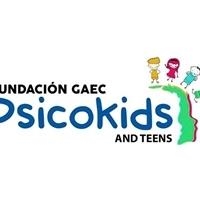Occupational therapy is a health discipline that focuses on helping people participate in activities of daily living that are meaningful and functional to them. Occupational therapists use a variety of techniques and activities tailored to each person's individual needs to promote health, independence and well-being. These activities may include physical exercises, motor skills training, activities of daily living such as dressing and eating, training in the use of technical aids, and environmental adaptations to facilitate participation in activities of daily living. Occupational therapy is applied in a wide range of contexts, including hospitals, rehabilitation centers, schools, workplaces and at home, and is especially useful for people with physical, mental or emotional disabilities, injuries, chronic illnesses or mental disorders. development.
Alzheimer's is a progressive mental pathology characterized by the deterioration of the brain mass causing memory loss.
Aphasia is a disorder in the part of the brain that controls language, making reading, writing and expressing what you want to say difficult.
Asperger's syndrome is a developmental disorder that mostly affects communication, relationships, and social development.
Back pain is a sharp pain in the back area that may or may not be related to external disease or injuries.
Carpal tunnel syndrome is caused by repetitive trauma to the median nerve at the wrist, resulting in pain, numbness, and tingling sensations.
Cerebral palsy is a congenital disorder of movement, posture, or muscle tone.
Cerebral stroke is a condition arising from the loss of oxygen to the brain, which can cause impairment in one or more brain functions.
Down syndrome is a genetic disorder produced by an extra chromosome, which causes intellectual disability and physical development disorder.
Dysphemia or stuttering is a speech disorder based on abnormalities in language fluency.
Hydrocephalus is the agglomeration of fluid in the cranial cavity.
Limb amputation consists of the abrupt cutting of a limb or limb by an external agent.
Lymphedema is an obstruction of the lymphatic system causing swelling in a leg or arm.
Motor development is the sequential process of human beings where they acquire a huge amount of motor skills.
It is a pathology in which an abnormal and progressive hardening of tissues or organism is represented. It mainly affects the blood vessels and the nervous system.
Muscle pain can be caused by incorrect postures, exercises, sitting or lying down for a long time.
Osteoarthritis is a chronic disease that causes the deterioration of joint cartilage. It is generally located in the hands, knee, spine, and hip causing the bones to wear out little by little and causing pain and inflammation.
Shoulder pain is a sharp pain in the shoulder area that may or may not be related to external diseases or injuries.
A stroke is a sudden stop in blood flow to the brain. It can be caused by an embolism, thrombus, or blood clot (hematoma). Symptoms include weakness and paralysis on one side of the body, difficulty walking, confusion, and loss of consciousness.
The occupational therapy in MedicosDoc.com provide the best care for national and foreign patients. Request your appointment today with the best occupational therapy in Colombia.
-

(Physiotherapy, Pediatrician, Physical therapy, Pediatric neurologist, Clinical psychologist, Child psychiatrist, Child psychologist, Child neuropsychologist, Eating behavior psychology, Occupational therapy, Speech Therapy, Nutritionist)
Cra. 18 No. 26 -180 Manga, primer callejón , Psico Kids & Teens IPS
Cartagena, Colombia
Ver Teléfonos
Ver perfil y pedir cita
-

(Physiotherapy, Psychologist, Physical therapy, Respiratory therapy, Clinical psychologist, Occupational therapy, Pelvic floor rehabilitation, Speech Therapy, Deglutologist)
Cra 7F No. 145 - 59 , Sede Cedritos
Bogotá, Colombia
Ver Teléfonos
Ver perfil y pedir cita